Common thyme is the most-used variety of the evergreen perennial herb. Thyme is characterized by small rounded leaves of bright green to gray-green clustered on woody stems. It has woodsy, grassy, and floral notes and is a key component in the French bouquet garni and Italian roast seasoning blends.
Table of Contents
What is thyme?
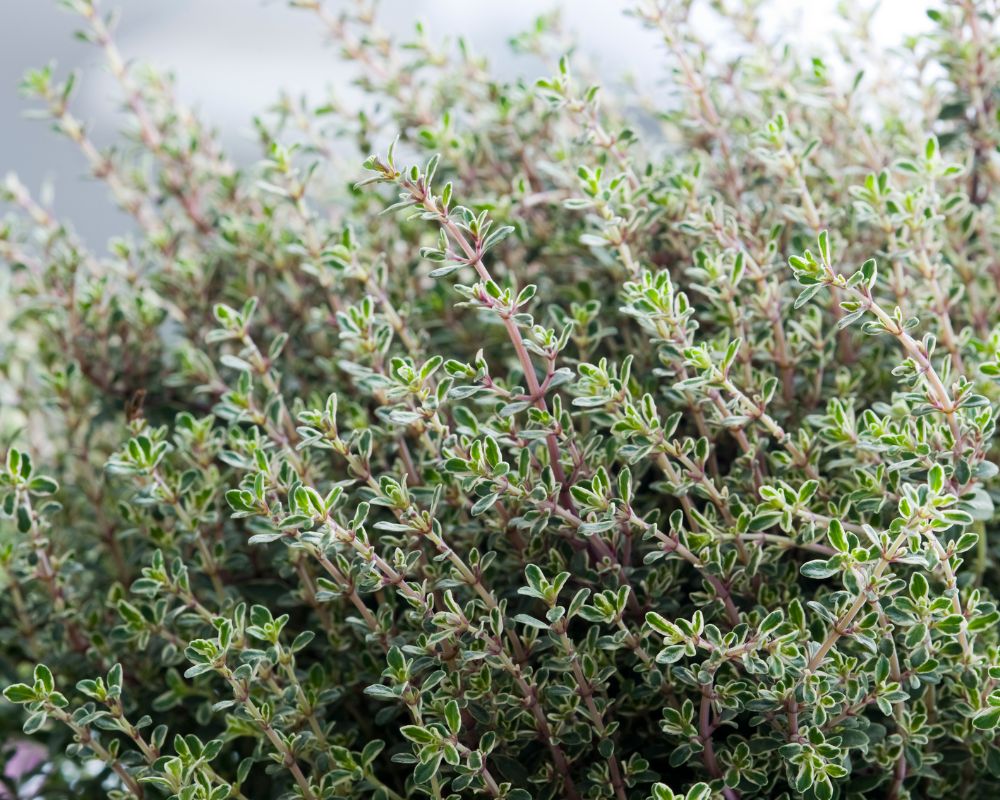
Thyme is a delicate herb that has been around for centuries. It’s highly versatile, one of the most globally distributed herbs used in various cuisines such as French, Italian, and Mediterranean.
| Origin | Indigenous to Eurasia |
| Appearance | A small, aromatic herb that grows in blushy clusters |
| Flavor profile | Earthy and minty, woodsy and flowery |
| Dishes | Roasted or braised meat to soups, stocks, stews, breads, bisquits |
Origin
Thriving in places with a Mediterranean climate, thyme (Thymus vulgaris) is indigenous to Eurasia. It’s part of the mint family Lamiaceae, which makes it a relative of another popular herb, oregano.
Throughout history, thyme has been a popular herb beyond just the culinary world. For example, ancient Egyptians, Romans and Greek people used it for various purposes.
Appearance
Thyme is a small, aromatic herb that grows in blushy clusters. Thyme leaves have a strong aroma and tend to be bright green when young, transforming to gray-green as they age.
You will see fresh thyme sold in sprigs. When dried, thyme becomes a dark green herb with thin and slender leaves.
Flavor profile
Thyme carries a distinctive flavor that sways from earthy and minty to woodsy and flowery. It has a delicate taste that’s not as overpowering as other herbs, such as rosemary and oregano.
Nonetheless, its herbaceousness is still noticeable. Like many other dried herbs, dried thyme has a more potent flavor.
Dishes
Today, you can find cooks worldwide using thyme to add a unique flavor to many savory dishes — from roasted or braised meat to soups, stocks, and stews.
Thyme extract is also used in biscuits, bread doughs, and cheesy dishes. Additionally, thyme is incorporated into seasoning blends and herb bouquets alongside marjoram, rosemary, oregano, parsley, and tarragon, among others.
Nutritional Benefits of Thyme
People don’t only use thyme for its wide-ranging culinary applications. It also has a formidable reputation in the healthcare industry, thanks to its array of health benefits.
Thyme has Vitamins A and C, copper, iron, manganese, and fiber. Carvacrol, found in the thyme essential oil, has antioxidant, anticancer, and antimicrobial activities. Thymol, also present in thyme, has antifungal and antibacterial properties.
With its antiseptic property, manufacturers also use thyme as a mouthwash ingredient. Meanwhile, people use thyme tea as a natural cough remedy.
5 best culinary thyme varieties
Thyme plants have various varieties, but not all are for culinary purposes. Others are considered ornamental varieties, including wild thyme (creeping thyme), wooly thyme, and mother of thyme.
Here are five of the best culinary thyme varieties:
- Common thyme
- Caraway thyme
- Lemon thyme
- Orange balsam thyme
- French or summer thyme
1. Common thyme
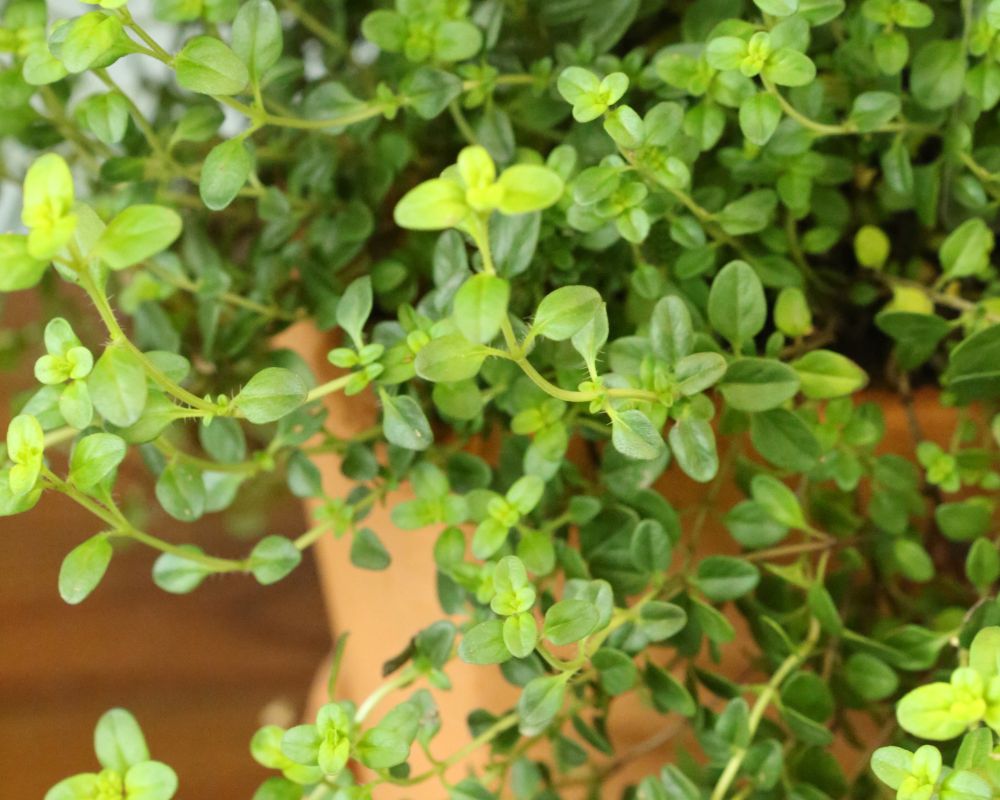
Also called English or garden thyme, common thyme (Thymus vulgaris L.) originated from northern Africa and southern Europe.
Though the leaves look paler and thinner, they have a sharper flavor than other varieties.
2. Caraway thyme
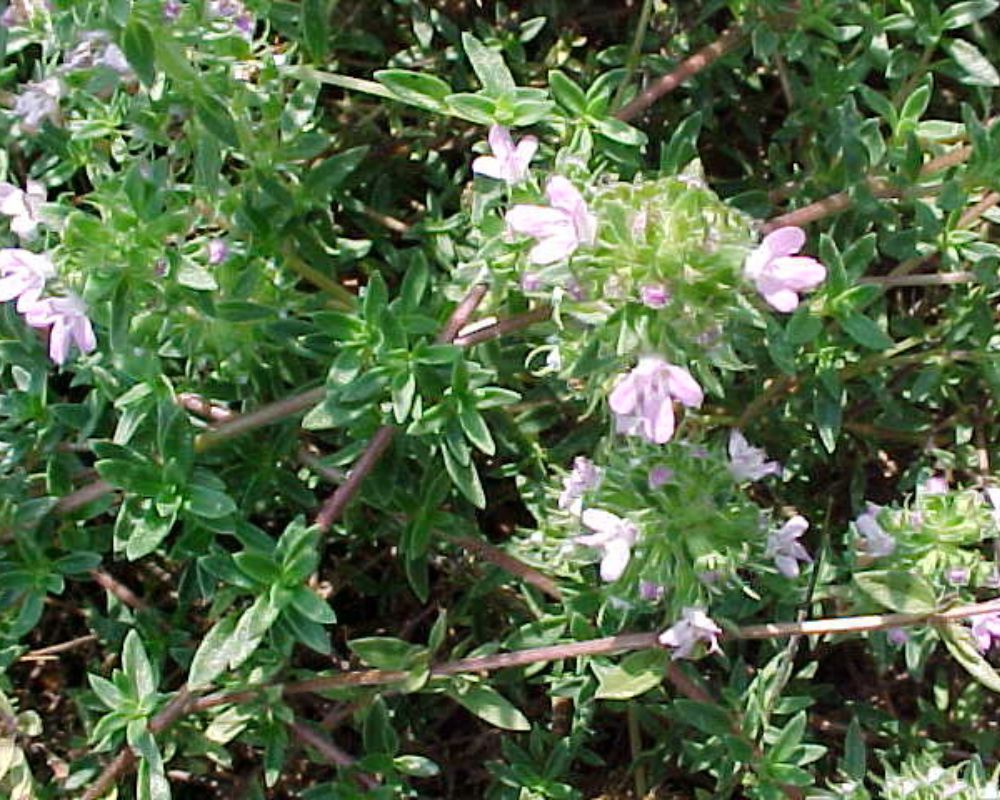
This thyme (T. herba-barona) is native to the Mediterranean islands of Sardinia and Corsica. It has thin, glossy, pointed dark-green leaves and a flavor that dances between thyme and caraway.
It has citrusy and licorice-like undertones.
3. Lemon thyme
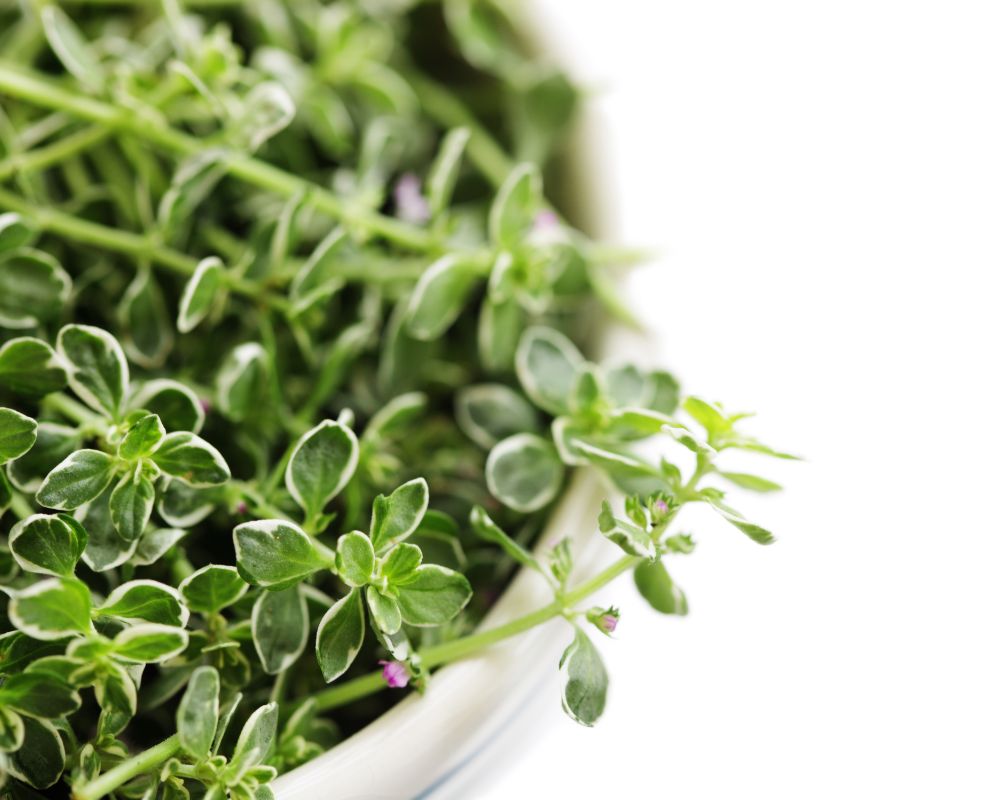
Lemon thyme (T. x citriodorus) is a Mediterranean herb that infuses a citrusy and lemony flavor and aroma into a dish.
It looks like your regular thyme but has thinner and slightly elliptical leaves.
4. Orange balsam thyme

This thyme variety (T. vulgaris “Orange Balsam”) has small, ovate gray-green leaves. As its name implies, it has a flavor and fragrance reminiscent of orange.
Unlike other thyme varieties, its fresh version is more flavorful than its dried counterpart.
5. French or summer thyme
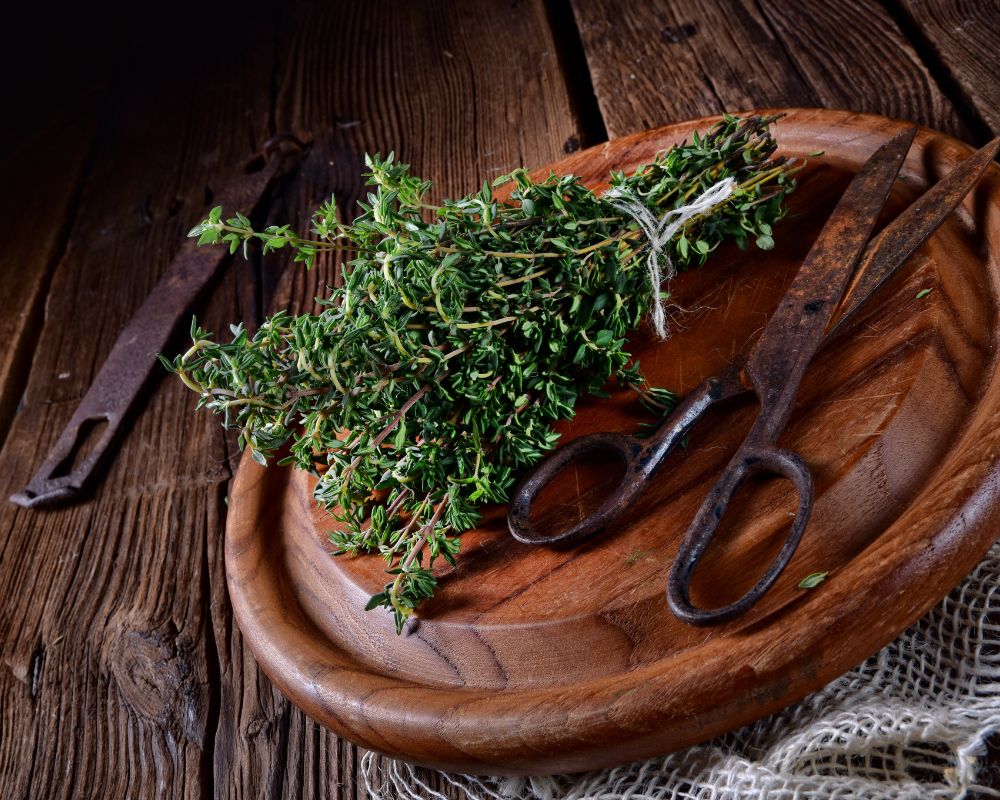
French thyme (T. vulgaris narrow-leaf French) boasts a milder and sweeter flavor than garden thyme.
Indigent to southern Europe, its leaves are gray-green.
How to cook with thyme?
The best practice is to add the herb sparingly early on to allow its flavor to infuse with the culinary creation.
If you’re using fresh ones, you can use the leaves or the whole sprig, depending on the recipe’s instructions. If you’re using sprigs, you must remove the stem before serving.
If you’re using dried thyme, use only ⅓ of the original fresh thyme indicated, as it’s more potent. You should also add it towards the beginning of the cooking process.
You can also make two famous combinations of herbs:
- Bouquet Garni: French for “garnished bouquet,” this French spice blend is used to introduce a deeper flavor to pot meals that stew and simmer. It’s a bundle of herbs, including thyme, parsley, and bay leaf, typically enclosed in a cheesecloth or tea bag.
- Italian Seasoning: If you want to make your own Italian seasoning at home (a perfect addition to meat dishes, pasta sauces, and marinades), simply mix dried thyme, oregano, basil, and rosemary.
Top 3 thyme recipes
Here are the top recipes that use thyme.
- Lemon Thyme Roast Chicken: This roast chicken uses a rub that combines thyme leaves, lemon juice, and softened butter.
- Creamy Mushroom Pasta With Thyme: An easy-to-make recipe, this pasta dish has pasta, thyme, oregano, garlic, mushrooms, cream cheese, flour, vegetable broth, olive oil, salt, and black pepper as its ingredients.
- Mediterranean Vegetable Beef Stew: This stew relies on various spices to elevate its flavor. These spices include fresh thyme, fresh rosemary, bay leaves, paprika, pepper, garlic powder, and salt.

